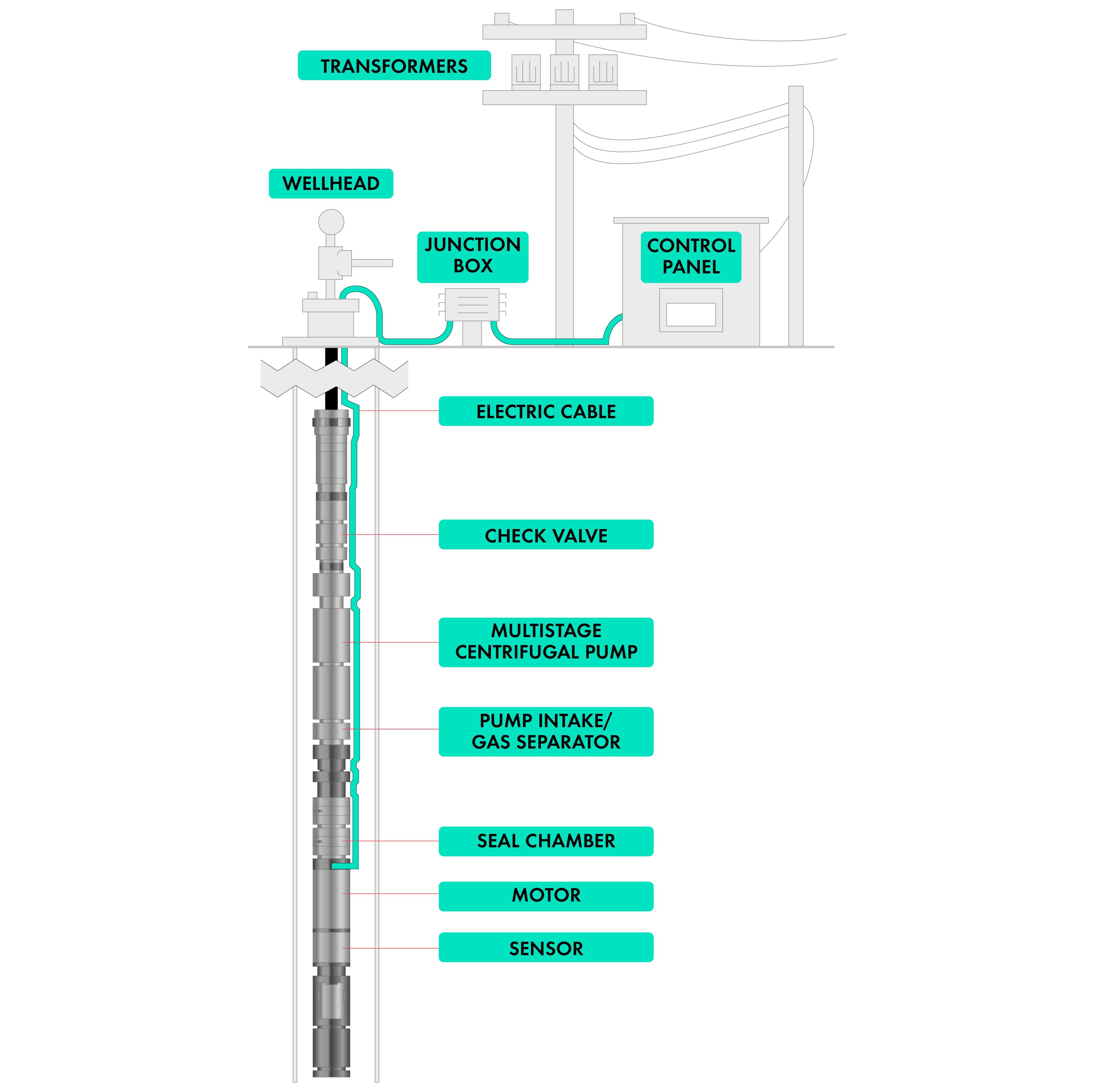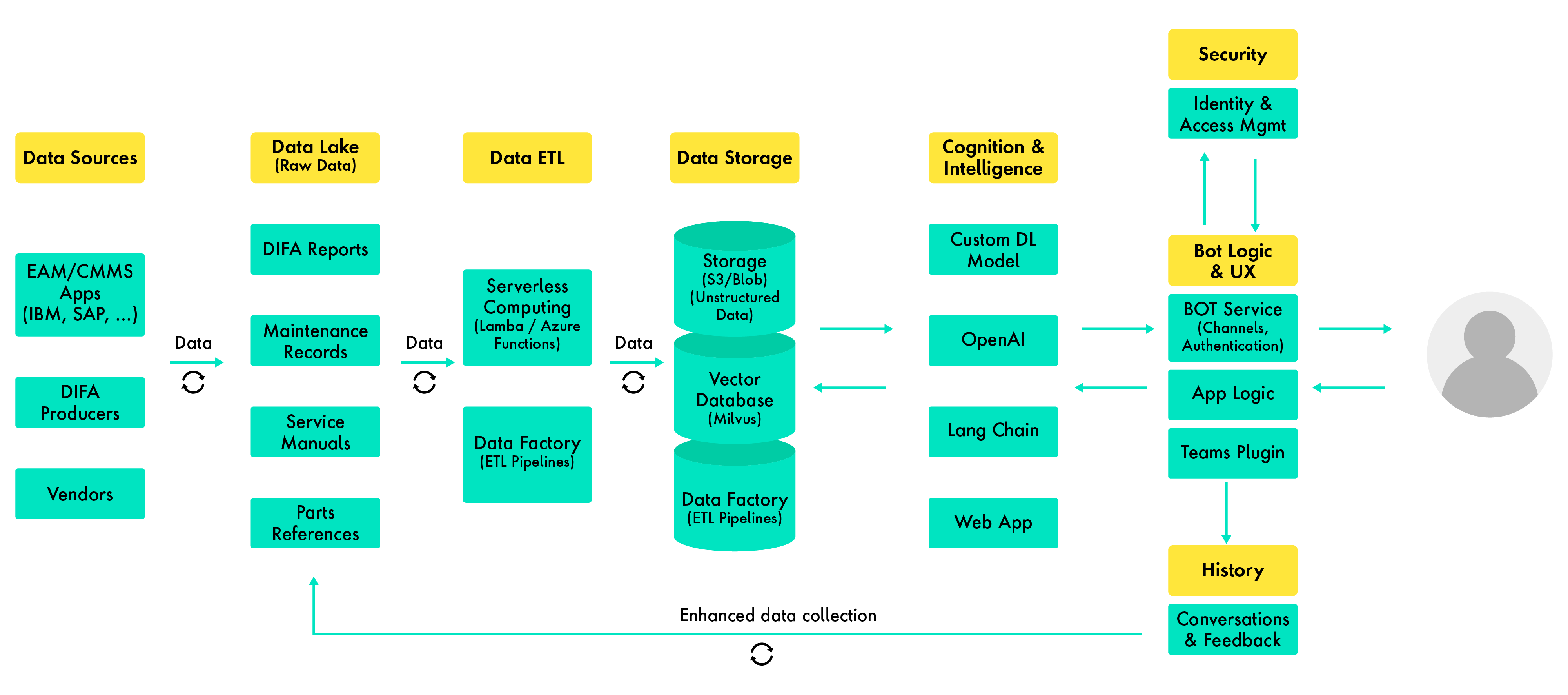What issue can we solve for you?
Type in your prompt above or try one of these suggestions
Suggested Prompt


How Generative AI Can Fuel Oil and Gas Data Analytics


As generative artificial intelligence (AI) continues to transform the way the world works, upstream oil and gas organizations have an opportunity to harness its power. After all, the industry produces and relies on an ocean of data that it cannot always convert into insights.
How can generative AI help upstream oil and gas organizations make the most of their data? With the help of applications, companies can use generative AI to create co-pilots that help manage processes, enhance systems and unlock new value.
Generative AI empowers upstream oil and gas companies to meet their challenges head-on
The upstream oil and gas industry faces many challenges that current solutions do not adequately address. The process-driven nature of the industry generates a significant amount of unstructured data, and structured data formats cannot always collect and organize this information.
For example, unstructured data often includes written summaries that provide context on decisions. This information could prove useful in the future if similar issues arise. So, how can processes improve access to this unstructured data?
One solution: use both structured and unstructured data to build, deploy and manage AI solutions. Gaining access to unstructured data will empower workers to make informed decisions and improve outcomes. This could lead to significant enhancements in operational and workflow efficiency, ultimately resulting in stronger decision-making processes.
Generative AI-powered applications promise to optimize assets
The production of gas and oil brings its own challenges to upstream operators. Generative AI can help energy and commodities companies make the most of their production time.
The rent rates for wells continue to rise. They range from $50,000 to $500,000 per day, depending on factors such as the type of rig, location, whether it is onshore or offshore, etc. The high cost underscores the importance of mitigating asset failures and improving operational efficiency.
Generative AI can help optimize assets by enhancing:
1. Operational efficiency of drilling
Improving operational efficiency of drilling includes various factors. It is dependent on the choice of drilling tools, bottom hole assemblies, parameters, type of response to wellbore pressures, crew, etc. Daily drilling reports typically log this information. Generative AI can harness unstructured data to propose solutions, highlight operational efficiencies and identify root cause errors through digital transformation
2. Equipment maintenance and improved design quality of equipment
There are several generators, motors and pumps in a rig environment. Reliability of these assets is key to a safe and cost-effective drilling job. An effective maintenance program can reduce machine downtime and increase the effectiveness of technicians. Generative AI could help technicians efficiently repair the equipment. This kind of tool would act as a digital assistant to the technician, answering questions about the equipment.
Another use case that can be built is a tool that can help equipment designers modify and improve design choices based on field performance..
3. Safety management on rigs
Safety remains a top concern on rigs. Between 2010 and 2020, the Bureau of Safety and Environmental Enforcement tracked an average of 231 annual injuries on American offshore rigs.
Before and after every job, workers conduct and log a safety analysis. This report provides insight into the nature of the job, safety precautions, leading indicators of safety incidents and other related information. Another generative AI use case would be to build a tool that helps workers with personal protective equipment requirements, best practices, risk management and risk alerts.
ESP systems require maintenance—and generative AI can help
Artificial lift is a crucial technique employed in the oil and gas industry to enhance and maintain production rates from wells that experience declining reservoir pressure. One widely used artificial lift method is an electrical submersible pump (ESP), which is capable of lifting 1000 barrels of crude oil per hour.
An ESP (Figure 1) consists of a series of centrifugal stages, including a motor, centrifugal pump and a power cable. It is installed downhole, submerged in the well and pulls the fluids to the surface.

When considering the use of an ESP system, operators typically conduct a cost-benefit analysis to assess its economic viability. This analysis considers factors like well productivity, ESP reliability, maintenance costs and potential impacts of failures on overall profitability.
ESPs are relatively expensive compared to other systems due to their complexity and advanced technology. An ESP failure in the Permian Basin region, for example, could cost up to $180,000 per incident, and in other remote locations, the cost may be even higher due to the scarcity of skilled maintenance personnel.
Premature ESP failures are a common occurrence in the industry, with one statistical study indicating that there are typically 125 ESP failure events in a month in Azerbaijan, where 15 percent of the wells employ ESPs.
How can stakeholders reduce their maintenance costs, improve operational efficiency and limit asset downtime?
Generative AI can act as a maintenance co-pilot for ESP technicians
One proposed solution is a generative AI-powered app (Figure 2) that can assist ESP technicians in diagnosing the root causes of equipment failures and providing step-by-step instructions for repairing them. Additionally, equipment operators can use the app to optimize the performance of ESPs by communicating with them to understand any location-based specifics about inputs, among other things. By using the app, technicians can provide feedback on whether the solution worked or not, and this data can be used in the ongoing training of the generative AI model to improve its efficiency.

Figure 2: Architecture for Maintenance Co-pilot App
This application can make use of the following unstructured data available to the company:
DIFA reports
- Requirements of investigation of ESP failures and nonstandard cause of failure
- Determining the root cause of failure
- Anticipatory actions
- Corrective action based on root cause analysis
Maintenance records
- Information regarding asset failures and error codes
- Context on repair procedure
- Part replacement
Symptoms
- Troubleshooting performance issues
- Preemptively replacing parts
A maintenance co-pilot app’s modules and features would enable insights and proactive decision-making
What specific modules and features might a maintenance co-pilot app include?
Data collection
In addition to information about the ESP components from manufacturers’ manuals and guides, the app would tap into any of the maintenance system applications used at the customer facilities to continuously stream data into the system.
All this data is collected in a data lake, which is the entry point into the system. An Exact Transform Load (ETL) pipeline will analyze the input data and extract known structured information into a relational database, and unstructured data into a blob storage and vector database. This will make it easier for DL/ML models to process them.
Cognition and intelligence
This module is the brain behind the app, and it has a web application that hosts all models.
It receives queries from the technician via the bot interface and runs them through the custom-trained deep learning model which uses error codes, product descriptions and symptoms to classify the type of equipment malfunction. Using that outcome, it further processes the information through a custom large language model (LLM), trained and fine-tuned on a continuous basis.
Bot interface
This module is responsible for security and governance for the app. It also orchestrates the chat with the bot processing logic and chat interface with various frontend options. This enables technicians to select their preferred interface.
This also keeps a log of chat messages and responses and takes any feedback from the technician to retrain and enrich the model to close the loop.

Input
Based on this image, could you tell me the mode of failure and root cause? How could it be avoided?
Answer
Asphaltene Solid Deposit on the Surface of ESP. Asphaltenes will precipitate from the crude oil under specific conditions. If asphaltene is determined to be present in the crude oil, operational conditions should be altered to avoid asphaltene precipitation and buildup.
Input
Model number is xxxx, failure code is yyy; provide me with step-by-step instructions to repair it.
Answer
Thank you for providing me with the model description. Based on this model, here are step-by-step instructions:
- Check the wear on the pressure switch
- Examine the check valve to determine if it is defective
With this simplified chat interface, maintenance technicians will be able to reduce the time it takes to repair the equipment and order the right parts. This virtual assistant will also be able to help optimize maintenance scheduling and provide insights and alerts to field operators about upcoming failures.
Leverage generative AI as a co-pilot
As a data partner, generative AI enables upstream oil and gas organizations to optimize production, reduce costs and enhance efficiency. It can also serve as a key co-pilot in maintaining and managing critical assets to reduce downtime and maximize value.
Publicis Sapient helps organizations leverage generative AI to make the most of a valuable asset: data. By empowering businesses to transform operations and equipping them with the tools they need to stay ahead of the competition, Publicis Sapient enables organizations to meet the industry’s ever-evolving challenges with confidence.



